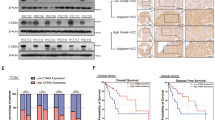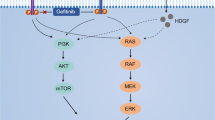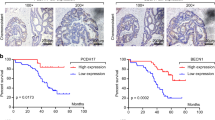Abstract
Inappropriate c-MET signaling in cancer can enhance tumor cell proliferation, survival, motility, and invasion. Inhibition of c-MET signaling induces apoptosis in a variety of cancers. It has also been recognized as a novel anticancer therapy approach. Furthermore, reports have also indicated that constitutive expression of P-glycoprotein (ABCB1) is involved in the HGF/c-MET-related pathway of multidrug resistance ABCB1-positive human hepatocellular carcinoma cell lines. We previously reported that elevated expression levels of PKCδ and AP-1 downstream genes, and HGF receptor (c-MET) and ABCB1, in the drug-resistant MES-SA/Dx5 cells. Moreover, leukemia cell lines overexpressing ABCB1 have also been shown to be more resistant to the tyrosine kinase inhibitor imatinib mesylate. These findings suggest that chemoresistant cancer cells may also develop a similar mechanism against chemotherapy agents. To circumvent clinical complications arising from drug resistance during cancer therapy, the present study was designed to investigate apoptosis induction in ABCB1-overexpressed cancer cells using c-MET-targeted RNA interference technology in vitro and in vivo. The results showed that cell viability decreased and apoptosis rate increased in c-MET shRNA-transfected HGF/c-MET pathway-positive MES-SA/Dx5 and MCF-7/ADR2 cell lines in a dose-dependent manner. In vivo reduction of tumor volume in mice harboring c-MET shRNA-knockdown MES-SA/Dx5 cells was clearly demonstrated. Our study demonstrated that downregulation of c-MET by shRNA-induced apoptosis in a multidrug resistance cell line.
This is a preview of subscription content, access via your institution
Access options
Subscribe to this journal
Receive 12 print issues and online access
$259.00 per year
only $21.58 per issue
Buy this article
- Purchase on Springer Link
- Instant access to full article PDF
Prices may be subject to local taxes which are calculated during checkout





Similar content being viewed by others
References
Lum BL, Gosland MP . MDR expression in normal tissues. Pharmacologic implications for the clinical use of P-glycoprotein inhibitors. Hematol Oncol Clin North Am 1995; 9: 319–336.
Thomas H, Coley HM . Overcoming multidrug resistance in cancer: an update on the clinical strategy of inhibiting p-glycoprotein. Cancer Control 2003; 10: 159–165.
Vadlapatla RK, Vadlapudi AD, Pal D, Mitra AK . Mechanisms of drug resistance in cancer chemotherapy: coordinated role and regulation of efflux transporters and metabolizing enzymes. Curr Pharm Des 2013; 19: 7126–7140.
Wang YJ, Zhang YK, Kathawala RJ, Chen ZS . Repositioning of tyrosine kinase inhibitors as antagonists of atp-binding cassette transporters in anticancer drug resistance. Cancers (Basel) 2014; 6: 1925–1952.
Shi Z, Tiwari AK, Shukla S, Robey RW, Singh S, Kim IW et al. Sildenafil reverses ABCB1- and ABCG2-mediated chemotherapeutic drug resistance. Cancer Res 2011; 71: 3029–3041.
Hung TH, Hsu SC, Cheng CY, Choo KB, Tseng CP, Chen TC et al. Wnt5A regulates ABCB1 expression in multidrug-resistant cancer cells through activation of the non-canonical PKA/β-catenin pathway. Oncotarget 2014; 5: 12273–12290.
Locatelli A, Lofgren KA, Daniel AR, Castro NE, Lange CA . Mechanisms of HGF/Met signaling to Brk and Sam68 in breast cancer progression. Horm Cancer 2012; 3: 14–25.
Mueller KL, Madden JM, Zoratti GL, Kuperwasser C, List K, Boerner JL . Fibroblast-secreted hepatocyte growth factor mediates epidermal growth factor receptor tyrosine kinase inhibitor resistance in triple-negative breast cancers through paracrine activation of Met. Breast Cancer Res 2012; 14: R104.
Chen CT, Kim H, Liska D, Gao S, Christensen JG, Weiser MR . MET activation mediates resistance to lapatinib inhibition of HER2-amplified gastric cancer cells. Mol Cancer Ther 2012; 11: 660–669.
Mazzanti R, Platini F, Bottini C, Fantappie O, Solazzo M, Tessitore L . Down-regulation of the HGF/MET autocrine loop induced by celecoxib and mediated by P-gp in MDR-positive human hepatocellular carcinoma cell line. Biochem Pharmacol 2009; 78: 21–32.
Li Y, Chen CQ, He YL, Cai SR, Yang DJ, He WL et al. Abnormal expression of E-cadherin in tumor cells is associated with poor prognosis of gastric carcinoma. J Surg Oncol 2012; 106: 304–310.
Crosswell HE, Dasgupta A, Alvarado CS, Watt T, Christensen JG, De P et al. PHA665752, a small-molecule inhibitor of c-Met, inhibits hepatocyte growth factor-stimulated migration and proliferation of c-Met-positive neuroblastoma cells. BMC Cancer 2009; 9: 411.
Berthou S, Aebersold DM, Schmidt LS, Stroka D, Heigl C, Streit B et al. The Met kinase inhibitor SU11274 exhibits a selective inhibition pattern toward different receptor mutated variants. Oncogene 2004; 23: 5387–5393.
Pepper MS, Matsumoto K, Nakamura T, Orci L, Montesano R . Hepatocyte growth factor increases urokinase-type plasminogen activator (u-PA) and u-PA receptor expression in Madin-Darby canine kidney epithelial cells. J Biol Chem 1992; 267: 20493–20496.
Jeffers M, Rong S, Vande Woude GF . Enhanced tumorigenicity and invasion-metastasis by hepatocyte growth factor/scatter factor-met signalling in human cells concomitant with induction of the urokinase proteolysis network. Mol Cell Biol 1996; 16: 1115–1125.
Organ SL, Tsao MS . An overview of the c-MET signaling pathway. Ther Adv Med Oncol 2011; 3: S7–S19.
Chu SH, Feng DF, Zhang H, Chen ET, Duan ZX, Li XY et al. c-Met-targeted RNA interference inhibits growth and metastasis of glioma U251 cells in vitro. J Neurooncol 2009; 93: 183–189.
Que W, Chen J, Chuang M, Jiang D . Knockdown of c-Met enhances sensitivity to bortezomib in human multiple myeloma U266 cells via inhibiting Akt/mTOR activity. APMIS 2012; 120: 195–203.
Que W, Chen J . Knockdown of c-Met inhibits cell proliferation and invasion and increases chemosensitivity to doxorubicin in human multiple myeloma U266 cells in vitro. Mol Med Report 2011; 4: 343–349.
Taulli R, Scuoppo C, Bersani F, Accornero P, Forni PE, Miretti S et al. Validation of met as a therapeutic target in alveolar and embryonal rhabdomyosarcoma. Cancer Res 2006; 66: 4742–4749.
Phillip CJ, Stellrecht CM, Nimmanapalli R, Gandhi V . Targeting MET transcription as a therapeutic strategy in multiple myeloma. Cancer Chemother Pharmacol 2009; 63: 587–597.
Ji CY, Xie ZN, Chen JC, Wang YN, Guan LL, Li HT et al. [RNA interference targeting c-Met inhibits proliferation of human laryngeal carcinoma Hep-2 cell line in vitro and in its xenografts in nude mice]. Zhonghua Er Bi Yan Hou Tou Jing Wai Ke Za Zhi 2010; 45: 61–67.
Lee SJ, Seol HJ, Lee HW, Kang WY, Kang BG, Jin J et al. Gene silencing of c-Met leads to brain metastasis inhibitory effects. Clin Exp Metastasis 2013; 30: 845–854.
Morotti A, Mila S, Accornero P, Tagliabue E, Ponzetto C . K252a inhibits the oncogenic properties of Met, the HGF receptor. Oncogene 2002; 21: 4885–4893.
Arena S, Pisacane A, Mazzone M, Comoglio PM, Bardelli A . Genetic targeting of the kinase activity of the Met receptor in cancer cells. Proc Natl Acad Sci USA 2007; 104: 11412–11417.
Sharma N, Adjei AA . In the clinic: ongoing clinical trials evaluating c-MET- inhibiting drugs. Ther Adv Med Oncol 2011; 3: S37–S50.
Lasagna N, Fantappie O, Solazzo M, Morbidelli L, Marchetti S, Cipriani G et al. Hepatocyte growth factor and inducible nitric oxide synthase are involved in multidrug resistance-induced angiogenesis in hepatocellular carcinoma cell lines. Cancer Res 2006; 66: 2673–2682.
Hung TH, Chen CM, Tseng CP, Shen CJ, Wang HL, Choo KB et al. FZD1 activates protein kinase C delta-mediated drug-resistance in multidrug-resistant MES-SA/Dx5 cancer cells. Int J Biochem Cell Biol 2014; 53: 55–65.
Chen L, Wang JM, Xu XP, Gao L, Fei XH, Lou JW et al. [The reverse effect on drug-resistance against tyrosine kinase inhibitor STI571 in mdr1 and bcr-abl positive leukemic cells]. Zhongguo Shi Yan Xue Ye Xue Za Zhi 2003; 11: 600–603.
Mahon FX, Belloc F, Lagarde V, Chollet C, Moreau-Gaudry F, Reiffers J et al. MDR1 gene overexpression confers resistance to imatinib mesylate in leukemia cell line models. Blood 2003; 101: 2368–2373.
Chong KY, Hsu CJ, Hung TH, Hu HS, Wang TH, Wang CH et al. Wnt pathway activation and ABCB1 expression account for attenuation of proteasome Inhibitor-mediated apoptosis in multidrug-resistant cancer cells. Cancer Biol Ther 2015; 16: 149–159.
Ke W, Yu P, Wang J, Wang R, Guo C, Zhou L et al. MCF-7/ADR cells (re-designated NCI/ADR-RES) are not derived from MCF-7 breast cancer cells: a loss for breast cancer multidrug-resistant research. Med Oncol 2011; 28: S135–S141.
Chan AW, Chong KY, Martinovich C, Simerly C, Schatten G . Transgenic monkeys produced by retroviral gene transfer into mature oocytes. Science 2001; 291: 309–312.
Huang TT, Chong KY, Ojcius DM, Wu YH, Ko YF, Wu CY et al. Hirsutella sinensis mycelium suppresses interleukin-1β and interleukin-18 secretion by inhibiting both canonical and non-canonical inflammasomes. Sci Rep 2013; 3: 1374.
Chong KY, Lai CC, Su CY . Inducible and constitutive HSP70s confer synergistic resistance against metabolic challenges. Biochem Biophys Res Commun 2013; 430: 774–779.
Calcagno AM, Ambudkar SV . Molecular mechanisms of drug resistance in single-step and multi-step drug-selected cancer cells. Methods Mol Biol 2010; 596: 77–93.
Calcagno AM, Salcido CD, Gillet JP, Wu CP, Fostel JM, Mumau MD et al. Prolonged drug selection of breast cancer cells and enrichment of cancer stem cell characteristics. J Natl Cancer Inst 2010; 102: 1637–1652.
Le Vee M, Lecureur V, Moreau A, Stieger B, Fardel O . Differential regulation of drug transporter expression by hepatocyte growth factor in primary human hepatocytes. Drug Metab Dispos 2009; 37: 2228–2235.
Brendel C, Scharenberg C, Dohse M, Robey RW, Bates SE, Shukla S et al. Imatinib mesylate and nilotinib (AMN107) exhibit high-affinity interaction with ABCG2 on primitive hematopoietic stem cells. Leukemia 2007; 21: 1267–1275.
Mlejnek P, Dolezel P, Faber E, Kosztyu P . Interactions of N-desmethyl imatinib, an active metabolite of imatinib, with P-glycoprotein in human leukemia cells. Ann Hematol 2011; 90: 837–842.
Haouala A, Widmer N, Duchosal MA, Montemurro M, Buclin T, Decosterd LA . Drug interactions with the tyrosine kinase inhibitors imatinib, dasatinib, and nilotinib. Blood 2011; 117: e75–e87.
Katayama K, Shibata K, Mitsuhashi J, Noguchi K, Sugimoto Y . Pharmacological interplay between breast cancer resistance protein and gefitinib in epidermal growth factor receptor signaling. Anticancer Res 2009; 29: 1059–1065.
Ma PC, Jagadeeswaran R, Jagadeesh S, Tretiakova MS, Nallasura V, Fox EA et al. Functional expression and mutations of c-Met and its therapeutic inhibition with SU11274 and small interfering RNA in non-small cell lung cancer. Cancer Res 2005; 65: 1479–1488.
Wang ZX, Lu BB, Yang JS, Wang KM, De W . Adenovirus-mediated siRNA targeting c-Met inhibits proliferation and invasion of small-cell lung cancer (SCLC) cells. J Surg Res 2011; 171: 127–135.
Zhang SZ, Pan FY, Xu JF, Yuan J, Guo SY, Dai G et al. Knockdown of c-Met by adenovirus-delivered small interfering RNA inhibits hepatocellular carcinoma growth in vitro and in vivo. Mol Cancer Ther 2005; 4: 1577–1584.
Xie B, Tang DG, Dong JH . Effects of c-met-siRNA on the growth and invasion of hepatocellular carcinoma MHCC97-H cells. Zhonghua Gan Zang Bing Za Zhi 2006; 14: 499–504.
Xie B, Xing R, Chen P, Gou Y, Li S, Xiao J et al. Down-regulation of c-Met expression inhibits human HCC cells growth and invasion by RNA interference. J Surg Res 2010; 162: 231–238.
Li Y, Zhang S, Tang Z, Chen J, Kong W . Silencing of c-Met by RNA interference inhibits the survival, proliferation, and invasion of nasopharyngeal carcinoma cells. Tumour Biol 2011; 32: 1217–1724.
Leelawat K, Leelawat S, Tepaksorn P, Rattanasinganchan P, Leungchaweng A, Tohtong R et al. Involvement of c-Met/hepatocyte growth factor pathway in cholangiocarcinoma cell invasion and its therapeutic inhibition with small interfering RNA specific for c-Met. J Surg Res 2006; 136: 78–84.
Acknowledgements
This work was supported in part by the Taiwan Ministry of Science and Technology, NSC 95-2320-B-182-028-MY3 and MOST 103-2320-B-182-021 to KYC, NSC 99-2632-B-182-001-MY3 to CPT, NSC 102-2815-C-182-062-B to YHL. The Chang Gung Memorial Hospital Grant (CMRPD 34012, CMRPD 180133, CMRPD1B0472, CMRPD1B0473) and Taiwan Ministry of Education (EMRPD1C0121). The IVIS imaging facilities were supported by the SPF Animal Center Animal Image Laboratory, Chang Gung University. The tissue slide imaging by HistoFAXS of Molecular Imaging Center, Chang Gung Memorial Hospital, Linkou Medical Center, TaoYuan. Taiwan.
Author information
Authors and Affiliations
Corresponding author
Ethics declarations
Competing interests
The authors declare no conflict of interest.
Rights and permissions
About this article
Cite this article
Hung, TH., Li, YH., Tseng, CP. et al. Knockdown of c-MET induced apoptosis in ABCB1-overexpressed multidrug-resistance cancer cell lines. Cancer Gene Ther 22, 262–270 (2015). https://doi.org/10.1038/cgt.2015.15
Received:
Revised:
Accepted:
Published:
Issue Date:
DOI: https://doi.org/10.1038/cgt.2015.15
This article is cited by
-
The role of MET in chemotherapy resistance
Oncogene (2021)



